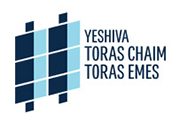Happiness. Could there be an emotion more foundational than happiness? As individuals, it is a perspective for which we strive. As parents, there is no obstacle large enough to deny our efforts to provide this feeling for our children. Yet for many, in direct correlation to the amount of time we focus on its acquisition, happiness seems to elude us.
Sukkos, more than any Yom Tov, is described in our Tefillos as Zman Simchasaynu, time of our happiness. There are various cerebral justifications for such a description. First, Sukkos marks the end of the Yomim Noraim, the Holy Holidays. Beginning with the month of Elul, we embark on a reflective journey back to Hashem, highlighted by our declaration of His Kingship on Rosh Hashana and our sincere request for forgiveness on Yom Kippur. Sukkos then, is a time to rejoice having traversed this 40 day timeline successfully.
What can we do to internalize a sense of happiness for ourselves and transmit the emotion to our children?
Sukkos also marks the completion of a different yet equally significant cycle: the Shalosh Regalim of Pesach, Shavuos, and Sukkos fame. It is this process that tracks the development of our everlasting bond with Hashem, one in which we received the coveted title of Hashem’s nation. Having been freed from Egyptian bondage, then given His holy Torah at Sinai, we celebrate together with Hashem as we sit in the Sukkah.
The ideas mentioned thus far, while certainly true, can take years to properly engender a feeling of happiness in the most astute adult. What can we do and or focus on, so that we can internalize a sense of happiness for ourselves and thereby transmit the emotion to our children?
There are three mitzvos that we involve ourselves with over the course of the Sukkos holiday that I believe possess the ability to unleash the happiness for which we all search.

Lulav and Esrog
Having spent a few years learning in Eretz Yisroel, I have witnessed the pomp and circumstance associated with the purchase of one’s Arba Minim. There is certainly a feeling of relief transitioning to excitement when the Lulav, Haddasim, and Aravos are finally bound together ready to be used in conjunction with the resplendent Esrog.
In order to properly fulfill this particular mitzvah, we are enjoined, after reciting the bracha, to shake the Arba Minim in all 6 possible directions. While the exact formula for waving varies, we all shake our valuable vegetation north, south, east, west, up, and down.
Chazal, our Sages, teach us that this practice is to remind us that Hashem has dominion over everything and is everywhere. This notion has tremendous potential to awaken a sense of happiness. All too often we hear that despondency and depression are on the rise. People feel alone and disconnected. Through the shaking of the Arba Minim we enable ourselves to remember that a Jew is never alone. Making Hashem a real part of our lives brings much happiness.

Sukkah
To air condition or not to air condition, that is the great Sukkah question in South Florida. The mitzvah of Sukkah, as described in the Torah, is to live in a Sukkah as you would in your home. Jews all across the globe prepare special homes for the duration of Sukkos, taking into account their particular climate needs. As such, a Sukkah comes in many shapes and sizes. What makes all Sukkahs the same is the requirement that they be temporary, as all roofs are constructed using Schach, cut branches.
What happiness can be gleaned from swapping our comfortable permanent homes for temporary ones whose predictability of comfort are subject to the whims of the weather? I believe the message Hashem sends us with the mitzvah of Sukkah is that happiness cannot be dependent on outside factors. The Mishna in Avos tells us that a happy person is one who is satisfied with his lot. We live in a society that is constantly looking to acquire the next big thing. Technological advances make that which is new obsolete in quick order. Sukkah refocuses our priorities, and helps us remember to take pleasure in what we have and not get lost to that which we want.

Simchas Torah
So much of what transpires over the course of Simchas Torah can be described as happiness. The singing, the dancing, the flag waving, the laughter, and let’s not forget the candy! Ending off the Holiday season in such fashion, easily qualifies as a happy moment. What, however, is the purpose of all our celebrating? How can we instill a message that will have the potency to last us as we head back to business as usual?
Simchas Torah combines the completion and renewal of the Torah reading process. In many ways it can be likened to an investment account. The larger your initial deposit is, the greater the dividends you will receive. Without a doubt, a Jew’s greatest happiness comes from a close connection to Torah study. It is on Simchas Torah that we are judged for how much Torah knowledge we will merit in the coming year. As we exert ourselves, displaying our intrinsic happiness to have the Torah, Hashem calculates and pays our joy forward with a year connected to His most precious gift. Our happiness then is found in a year of sustained Torah growth.
Sukkos is a time that holds the secrets allowing us to incorporate a lasting happiness in our lives. Keeping a real focus on Hashem’s presence, putting into perspective contentment over pursuit, and growing our relationship with Torah study, are messages we can glean from the Zman Simchasaynu. In doing so, we will have the tools to engender a feeling of happiness in our children, helping them to grow and find their unique place in Hashem’s nation.
Rabbi Zev Weiner is the Assistant Principal of YTCTE Rohr Middle School. He can be reached with questions or comments at [email protected].

